12+ SAMPLE Web Design Proposal
-
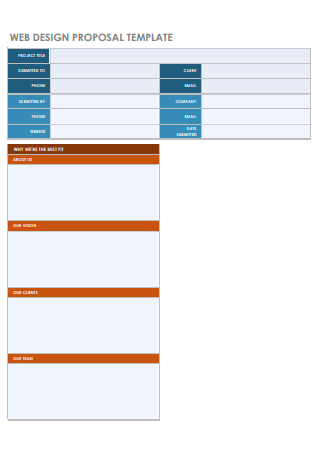
Web Design Proposal Template
download now -
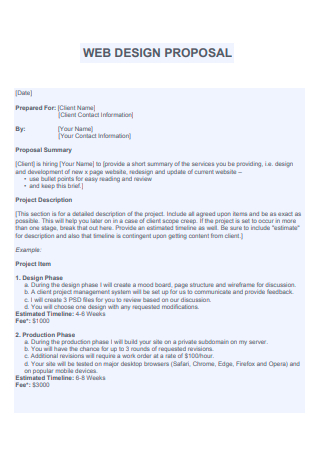
Basic Web Design Proposal
download now -
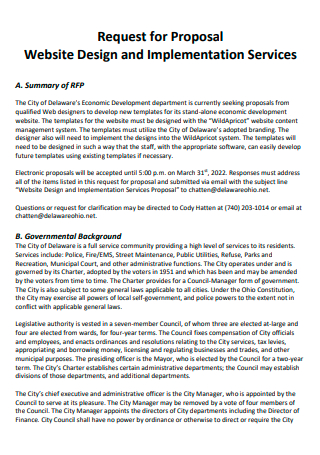
Website Design and Implementation Services Proposal
download now -
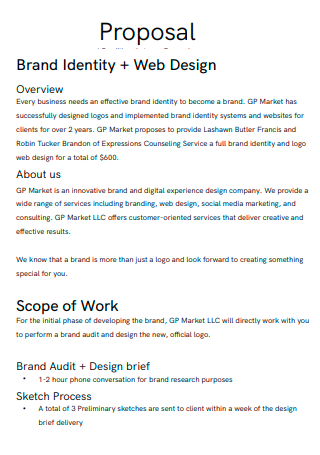
Brand Identity and Web Design Proposal
download now -
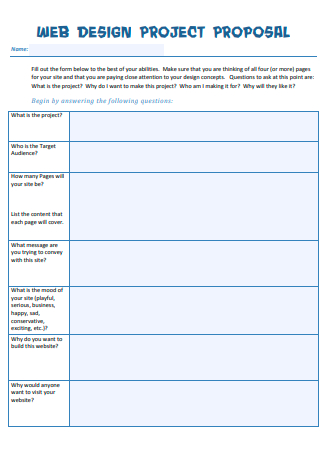
Web Design Project Proposal
download now -
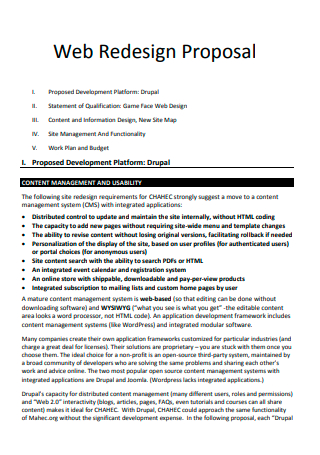
Web Redesign Proposal
download now -
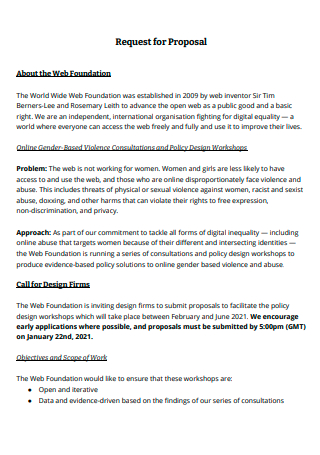
Web Foundation Design Proposal
download now -
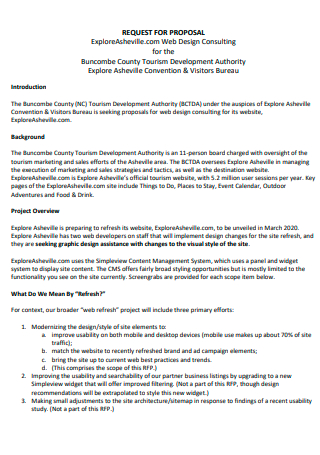
Web Design Consulting Proposal
download now -
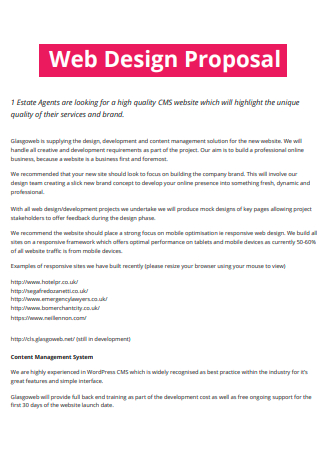
Web Design Proposal Example
download now -
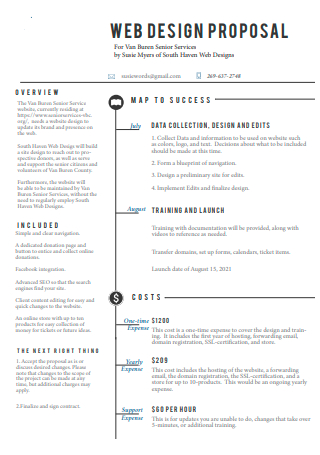
Printable Web Design Proposal
download now -
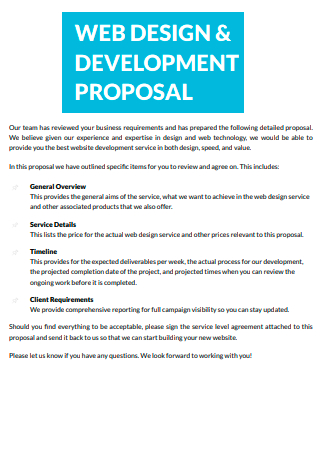
Web Design and Development Proposal
download now -
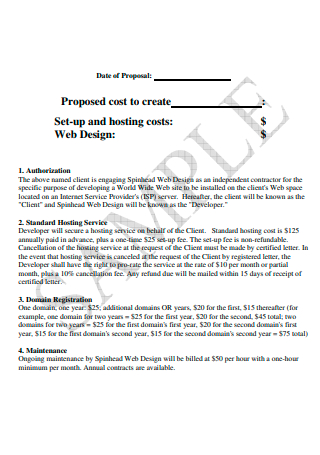
Sample Web Design Proposal
download now -
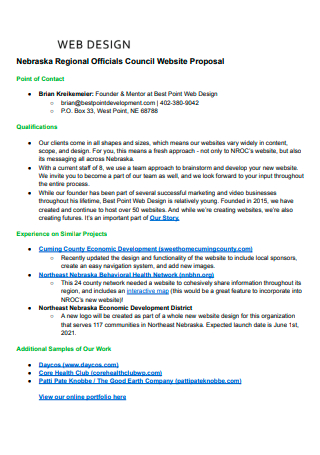
Web Design Proposal in PDF
download now
What Is a Web Design Proposal?
A web design proposal is a formal contract between a web designer and potential clients. It specifies the client’s needs as well as the service or product that the web designer will give, as well as the pricing of that service. The web development proposal for clients will come in handy if you are the web designer who has keen ideas on how you propose to go about handling the clients’ needs. You can save time if you utilize the web design proposal template available.
Errors to Avoid While Creating a Web Design Proposal
Design proposals are a nightmare. All too often, you put in hours of hard work to entice that new customer, only to have them choose someone else. A successful Design concept becomes personal. Your proposal must demonstrate that you have brains and creative abilities, but it must also persuade your clients that you comprehend who they are and what they genuinely want.
Tips for Improving the Web Design
A website genuinely thrives when its design contributes to its user experience and functionality while also complementing its content. Even an experienced website designer might easily overlook these upgrades, believing that they are at the bottom of the mountain worth list of website priorities. The last thing you want is to spend time generating great content for your blog or service pages only to have it go undetected because of design defects, navigation challenges, unclear layouts, or lost conversion possibilities. Continue reading this curated list to learn more tips.
How to Write a Web Design Proposal
Writing a web design proposal is time-consuming. You would undoubtedly prefer to spend your time creating rather than pushing prospects through sales funnels. However, if you do not take the time to work on your ideas, you and your company will be in a difficult scenario. Your project proposal may make or break your chances of getting Web Design Contracts, therefore mastering the art is essential. In this guide, the steps will direct you through the components that any website design proposal must include, as well as provide you with a web design proposal example for reference.
1. State Professional Details
Project Proposals are meant to assist clients to comprehend what they are getting themselves into rather than overwhelm them with specifics. Your introduction should represent the discussions you should have had regarding the client’s requirements. You should include the customer’s name, project title, or the problem the client wants to be addressed, the official name and title of the contact person, your name and title, and the date of submission. Don’t worry because this is where you will be able to write the web design proposal job description.
2. Problem Overview
Following your introduction to the prospect, the first aspect of a good web design proposal is the problem overview. The client should read this and understand that there is a concern or opportunity for their business that they are not capitalizing on, that you have complete, thorough knowledge of their problems and needs, and that understanding the core issues your client is facing will help you define both your obligations and the scope of the project. This offers the client a reason to trust you and your method. The greatest web design proposals highlight the client’s demands and that you can answer their problems.
3. Solution Pitch
After investigating the company’s history and speaking with stakeholders, you should grasp their problem and begin developing a solution. You must communicate the commercial advantages of your design technique. You will position yourself as a vital role in driving their future commercial success if you use business terminology to illustrate design’s beneficial influence on their difficulties. You may demonstrate value, for example, by explaining how the new design would persuade site visitors to improve their branding and lead to gain in the purchases of their Products or services.
4. Deliverables
This is where you will define precisely what you will produce as part of the project. This is an essential component, but it is more crucial for what you exclude than what you include. Scope creep is a typical problem in website design, especially when working with inexperienced small firms, and it can only be avoided by establishing a Timeline or time table, clear objectives, and expectations. For example, you may agree to develop their website but then discover they lack a logo. You may be confused about what to do such as whether or not you would be doing the initiative to suggest one so that the website will have it.
5. Provide the Process Overview
After you have clearly defined the problem, solution, and deliverables, the next part will dig into execution and describe how you will go about constructing the website and solving the client’s problem. In this area, you should define the various phases in the process, provide a simple timetable so the client knows when to anticipate each delivery, and outline your client’s expectations so they know what they need to do and when to assist the project in stay on track. The worst thing you can do is overlook a client-specific step in your plan, forcing you to readjust their expectations mid-project, resulting in time and money lost.
6. Present the Total Cost
This is frequently where a web design proposal is won or lost. Before you begin working on your proposal, inquire about your client’s overall budget. It’s fairly unusual for a prospect to enter bids with a certain sum in mind. Discussing the prospect’s budget openly before developing the proposal is a win-win situation for you both. This talk will assist them in generating a budget for the project, as well as inform you whether or not the project is financially viable for you before you put in the effort of preparing a proposal. To present the amount neatly, you can utilize tables, Graphs, or charts.
FAQs
What is a graphic design proposal?
Graphic designers utilize a graphic design proposal to promote their creative skills to potential clients. It is a professional proposal that explains a freelance graphic designer’s or a creative agency’s capabilities and how they will meet the demands of the prospective customer. Some examples of the uses of a graphic designer are to create a design for signage, corporate branding or identity, packaging for your products, printed materials, online art, album covers, Film and television titles or intros, and clothing apparel.
What is a website maintenance plan?
A website maintenance plan is precisely that: an ongoing plan to maintain and support your website. This frequently necessitates more in-depth work than most people have time for or know how to perform successfully, so they hire outside digital marketing organizations or vendors to maintain their website for them. Regularly updating and maintaining your site is critical to ensuring that it is operating at peak efficiency. Websites require upkeep to function correctly. Proper Website Maintenance helps to assure site security, improve the number of new visitors, enhance repeat traffic, and more.
How much can a web designer make?
A web designer in the United States earns over $50,000 or more a year on average. A web designer’s hourly salary is between $23 and $25 per hour. However, this might vary depending on a variety of criteria such as experience level, specialty, and demand. You may make money by narrowing and honing your skillset. Web development is a rapidly expanding sector, and where there are developers, there will be designers. If this is the job for you, the pay is competitive and the sector is expanding. It’s an excellent moment to become a web designer.
You have reached the end of the article which marks you as ready to begin writing the proposal. You may find a one-page web design proposal is not enough to convey all the solutions you intend to pitch to the client. Don’t worry about exceeding various pages because as long as you prioritize important content, then the client would understand.
